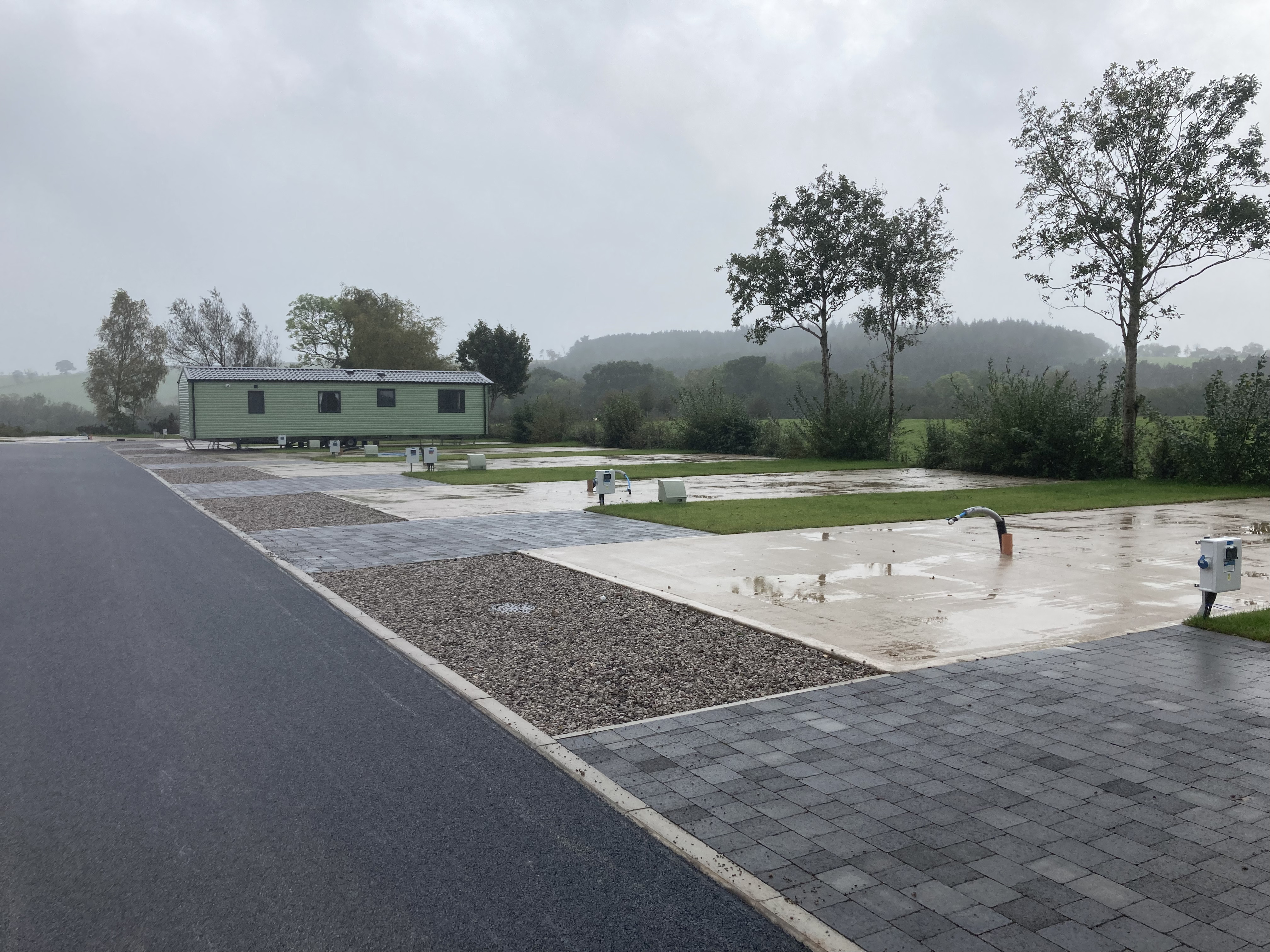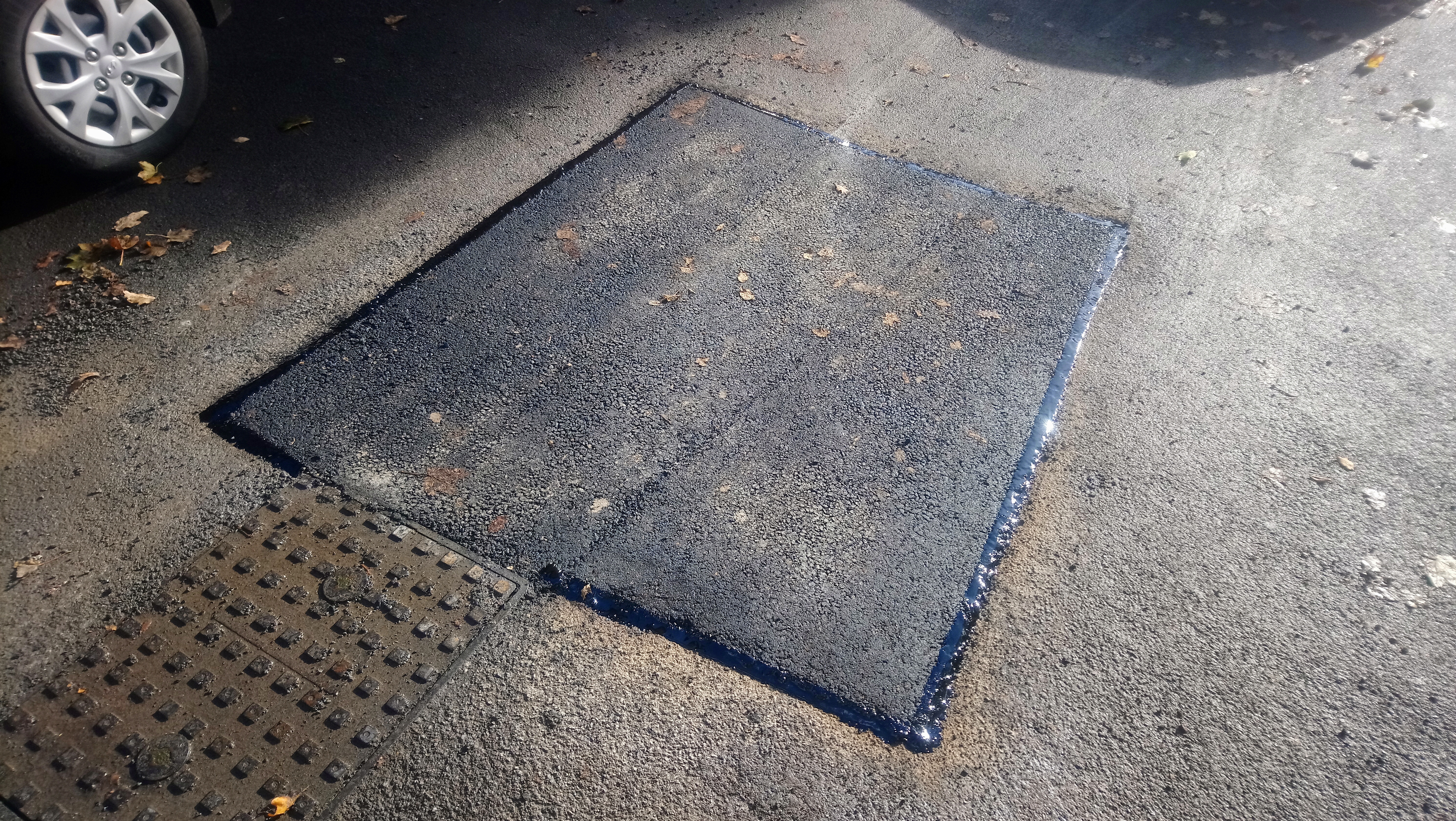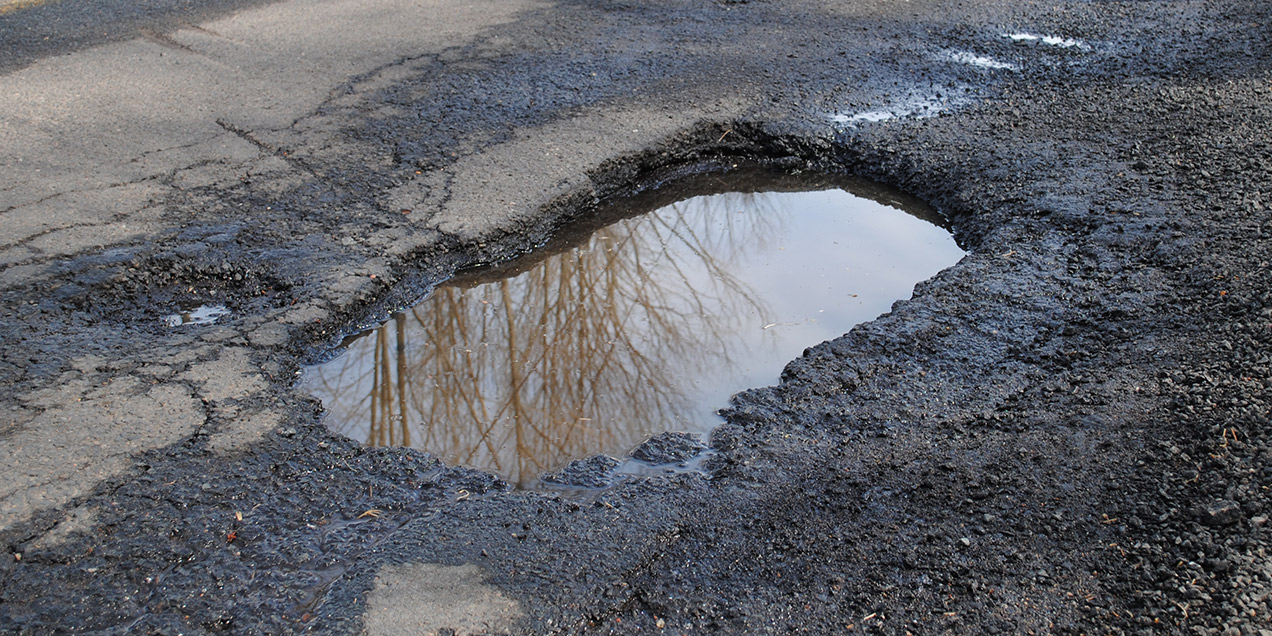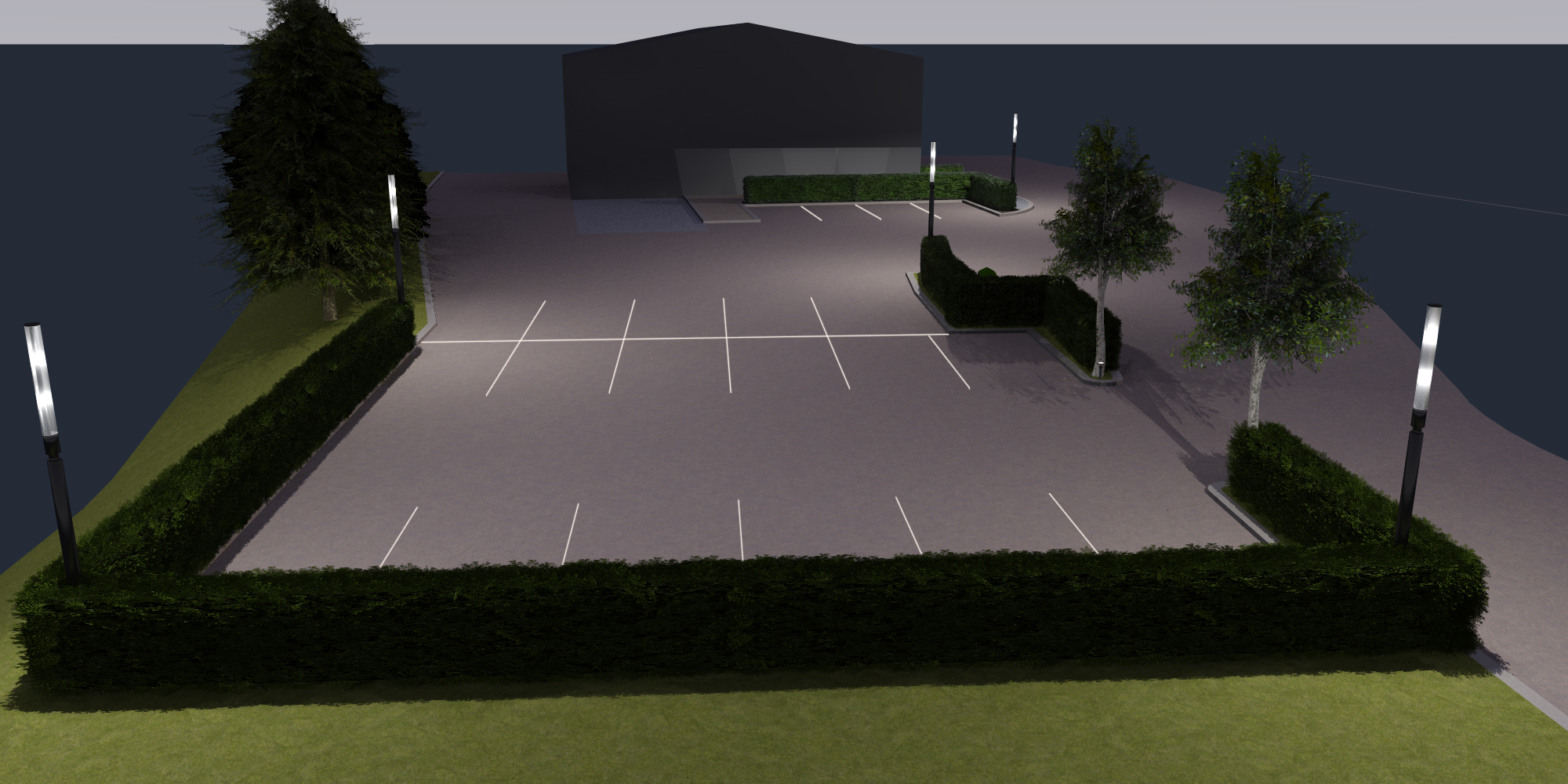Potholes
Potholes, as I am sure we are all aware, are holes in the roadway that vary in size and shape and . They are caused by the expansion and contraction of ground water, after the water has entered into the ground under the pavement. When water freezes due to cold weather conditions it creates ice, which takes up more space under the pavement. When water freezes it expands and this causes the pavement to bend, and crack, which weakens the surface. Then when the ice melts, the pavement contracts and leaves gaps or voids in the surface under the pavement. The holes get bigger as vehicles drive over them, damaging the structure of the road below its surface layer
Studies undertaken by independent surveyors have shown that almost a third of all damage to cars on the road every year are due to potholes causing damage to cars and in some incidences leading to road accidents. The damage to cars caused by potholes can include the following:
- Buckled wheels
- Cracks
- Lumps in the tyre
- Cracked alloys
- Damaged tracking
- Wheel Imbalance
- Damaged breaks
- Suspension damage
Potholes are a very serious issue and can be both a danger and an annoyance to drivers, often causing damage to the car and in the worst case lives.
What can be done about these potholes?
The short-term way to limit the damage caused by potholes are, as a driver, to follow these rules:
- To be alert – always staying alert when driving is key so that potholes can be spotted and the driver can act accordingly
- To drive at an appropriate speed – potholes do more damage to vehicles when travelling at higher speeds, so keep the speed down and keep the risk down!
- Check your vehicle – after work or travel, occasionally check your vehicle for damage that may have been sustained by potholes. It can never hurt to check for damage because it is better to know now, than when it’s too late or further damage can be sustained.
Right? But what if I want a more permanent solution
This can done, one or two ways – by refilling the pothole with tarmac so that the hole is covered and there’s no pothole to cause damage anymore. This is a relatively cheap service to do on any driveway or road. The pothole can be filled either manually or machine filled by anyone on our team. However, this is a short-term solution with the pothole likely to reappear again due to the already weakened structure of the driveway or road.
The second solution is to re tarmac the road or driveway as if a pothole is created it’s due to the driveway or road being weakened and worn by supporting the weight of vehicles and damage due to weathering causing the surface to be not as strong as when it was put down. Although this is a costlier choice to do, it is a long-term solution to stopping more potholes occurring in the future, meaning it is more than likely going to save a customer more in the long term.







